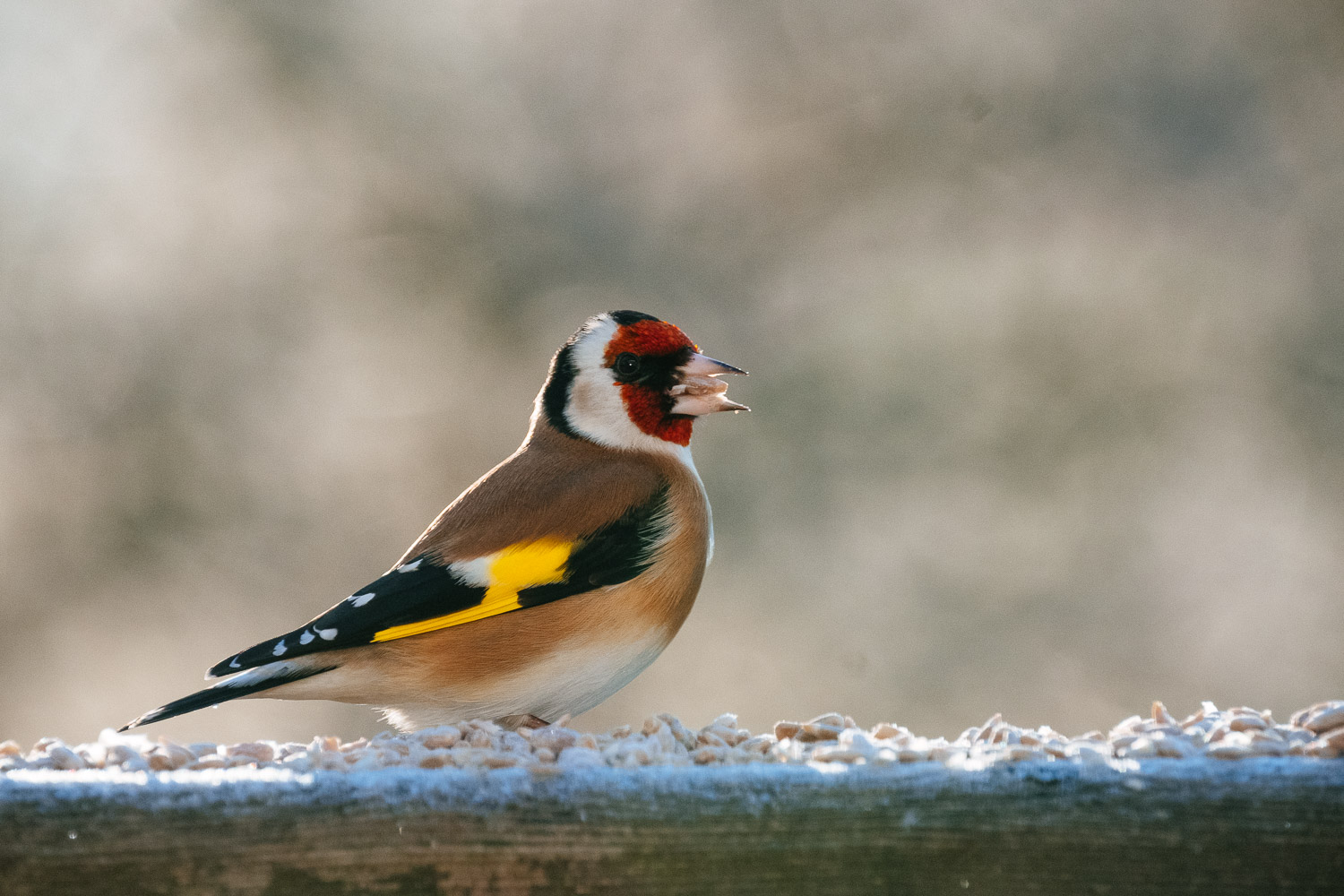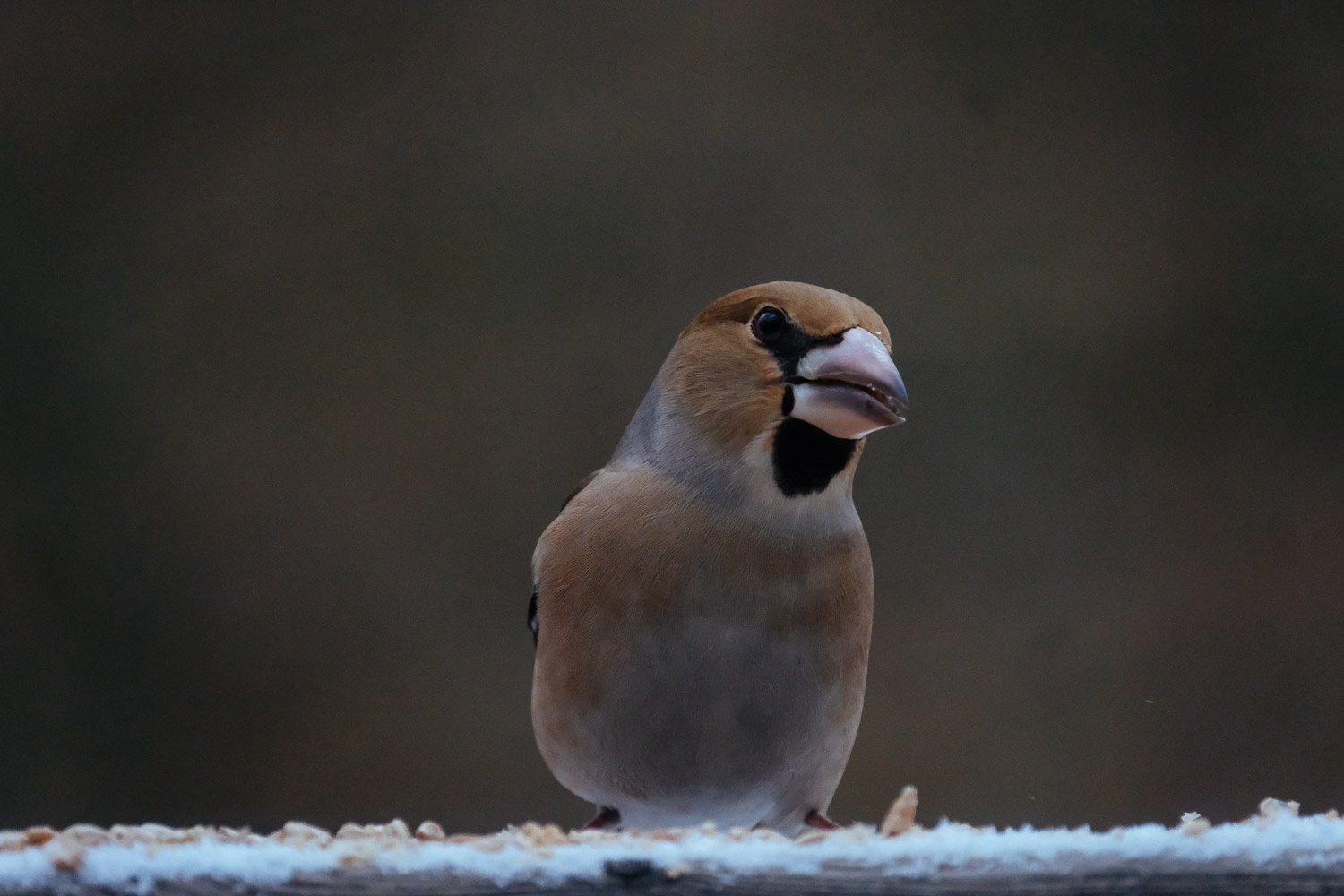 FUJIFILM X-Pro2 (400mm, f/5.6, 1/500 sec, ISO4000)
FUJIFILM X-Pro2 (400mm, f/5.6, 1/500 sec, ISO4000)
How about an ISO 4000 JPEG of s song bird shot with the 100-400 zoom on its long end wide open at close distance? This is as bad as it gets but it’s not bad at all!
No, I did not get back to shoot JPEGs. It just happened that my X Pro-2 returned to the JPEG setting after I updated its firmware. I only found out after I have imported the first images into lightroom. First I was disappointed by the lack of fine detail but that changed when I found out that I was looking at a ISO 4000 JPEG. Disappointment changed to amazement. Digital photography has come a long way. When I bought a second hand Nikon D1 in January 2002 digital photography was not much more than a promise. I expected that this technology would improve and that digital photography will replace film in the near future. I expected dramatic improvements but I never expected to shoot at ISO 6.400 or even at ISO 12.800 and get useful results.
I also didn’t expect resolutions to go beyond 12 MP. I guess I was wrong big time. But not only me.
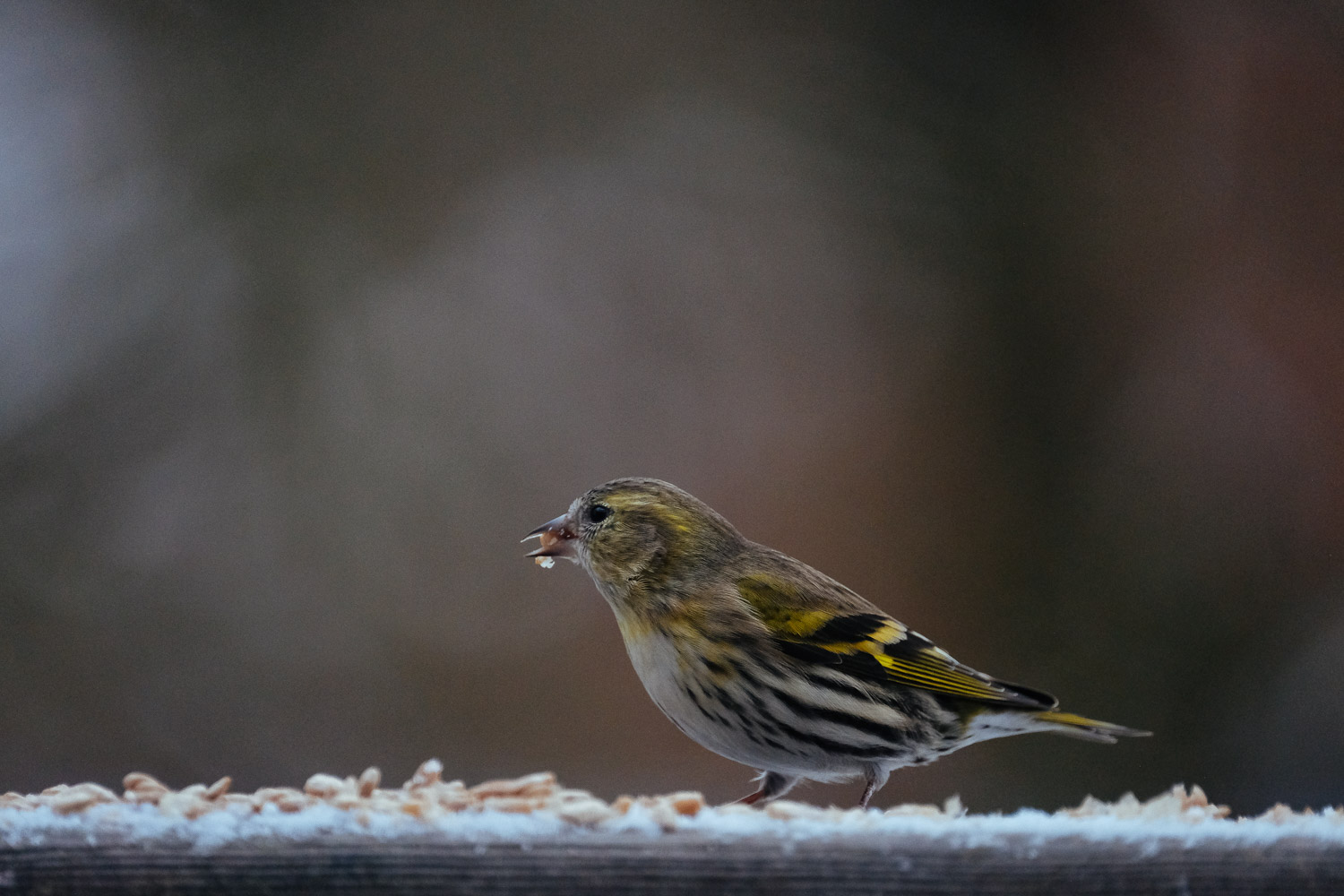 FUJIFILM X-Pro2 (400mm, f/5.6, 1/320 sec, ISO3200)
FUJIFILM X-Pro2 (400mm, f/5.6, 1/320 sec, ISO3200)
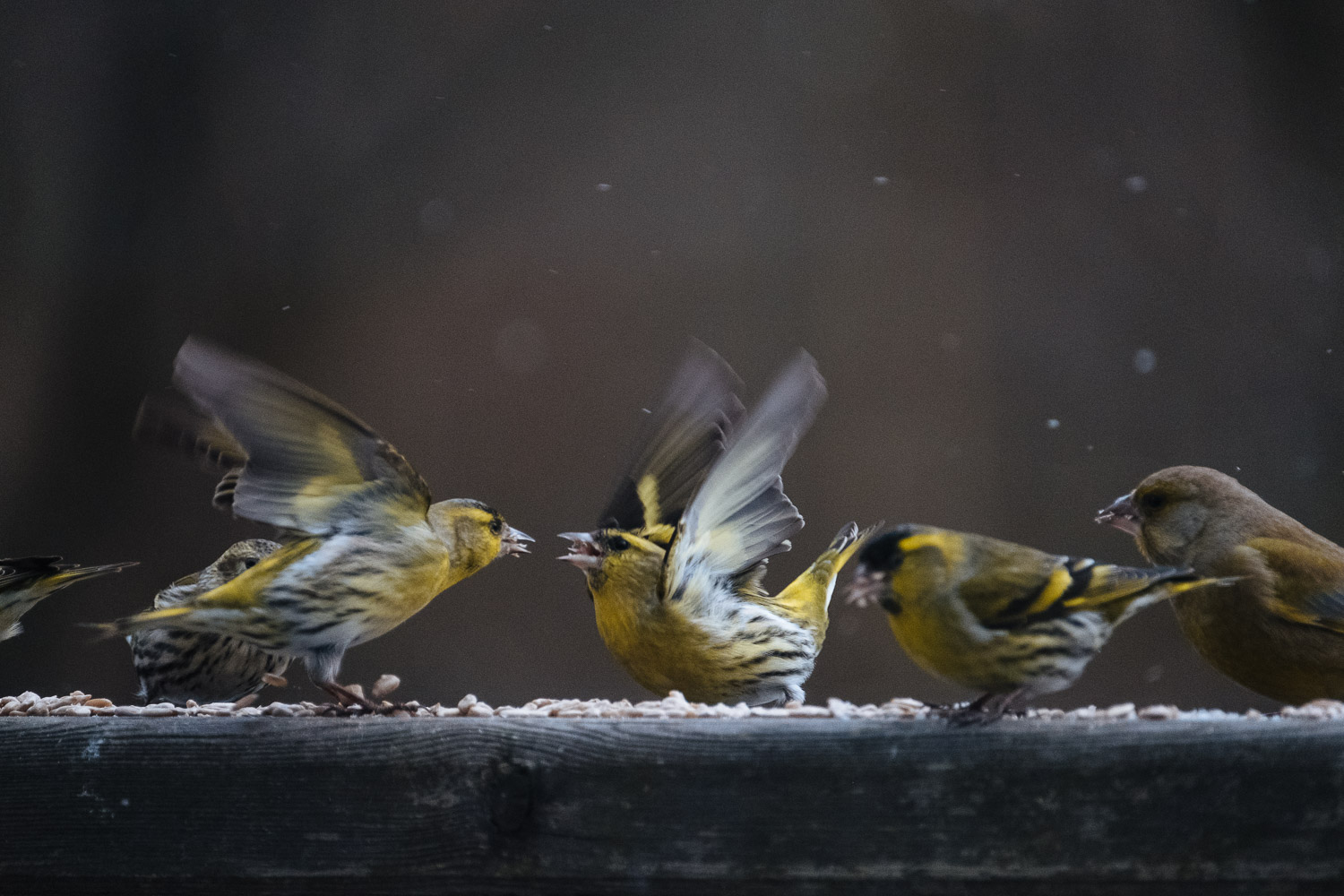 FUJIFILM X-Pro2 (400mm, f/5.6, 1/500 sec, ISO3200)
FUJIFILM X-Pro2 (400mm, f/5.6, 1/500 sec, ISO3200)
 FUJIFILM X-Pro2 (400mm, f/5.6, 1/500 sec, ISO3200)
FUJIFILM X-Pro2 (400mm, f/5.6, 1/500 sec, ISO3200)
Now Fuji has transformed the rather slow X Pro-1 into an action camera. It now shoots 8 fps. Exactly what my Nikon D2H managed 11 years ago. But the Nikon was a Pro-DSLR with only 4 MP but focussed on speed whereas the Fuji X Pro-2 is a rather compact camera with focus on travel and street photography.
A lens like the XF 14/2.8 or the XF 23/2 is still a better match to the X Pro-2 but it is amazing how versatile the Fuji X system is. Combine with one of those two lenses or even the XF 27/2.8 and you have a compact and light camera. Combine it with the XF 100-400 OIS and you get a competent setup for nature photography. In good light you can even use a 1.4x teleconverter to further increase the reach. Now you have an equivalent focal length of 840mm! To get the same reach on a full frame DSLR you would have to combine a 600mm tele lens with a 1.4x TC. A massive and heavy combo. Sure it would be 1 stop faster but honestly with todays high ISO performance the faster aperture has become less important.
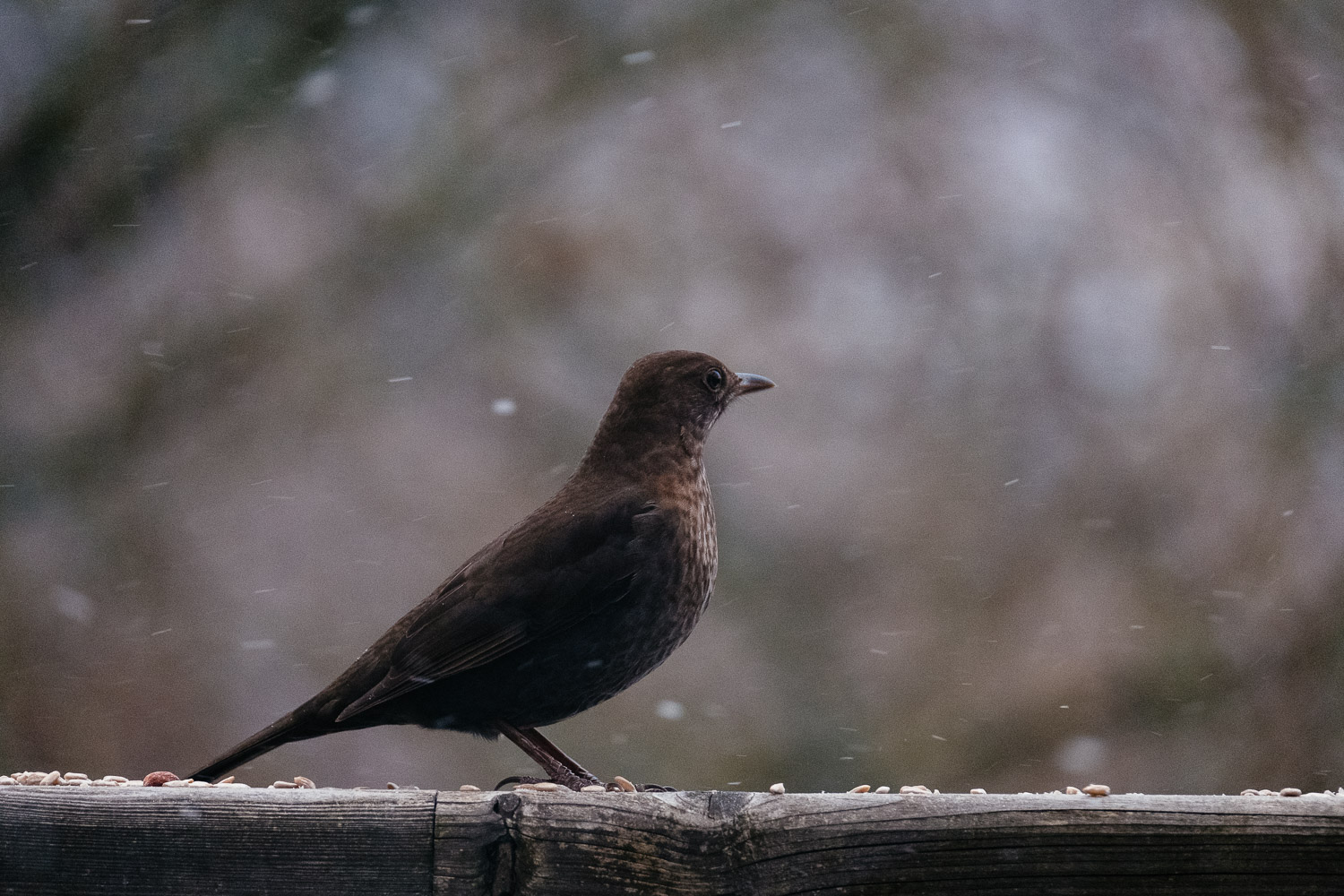 FUJIFILM X-Pro2 (290.6mm, f/5.2, 1/500 sec, ISO3200)
FUJIFILM X-Pro2 (290.6mm, f/5.2, 1/500 sec, ISO3200)
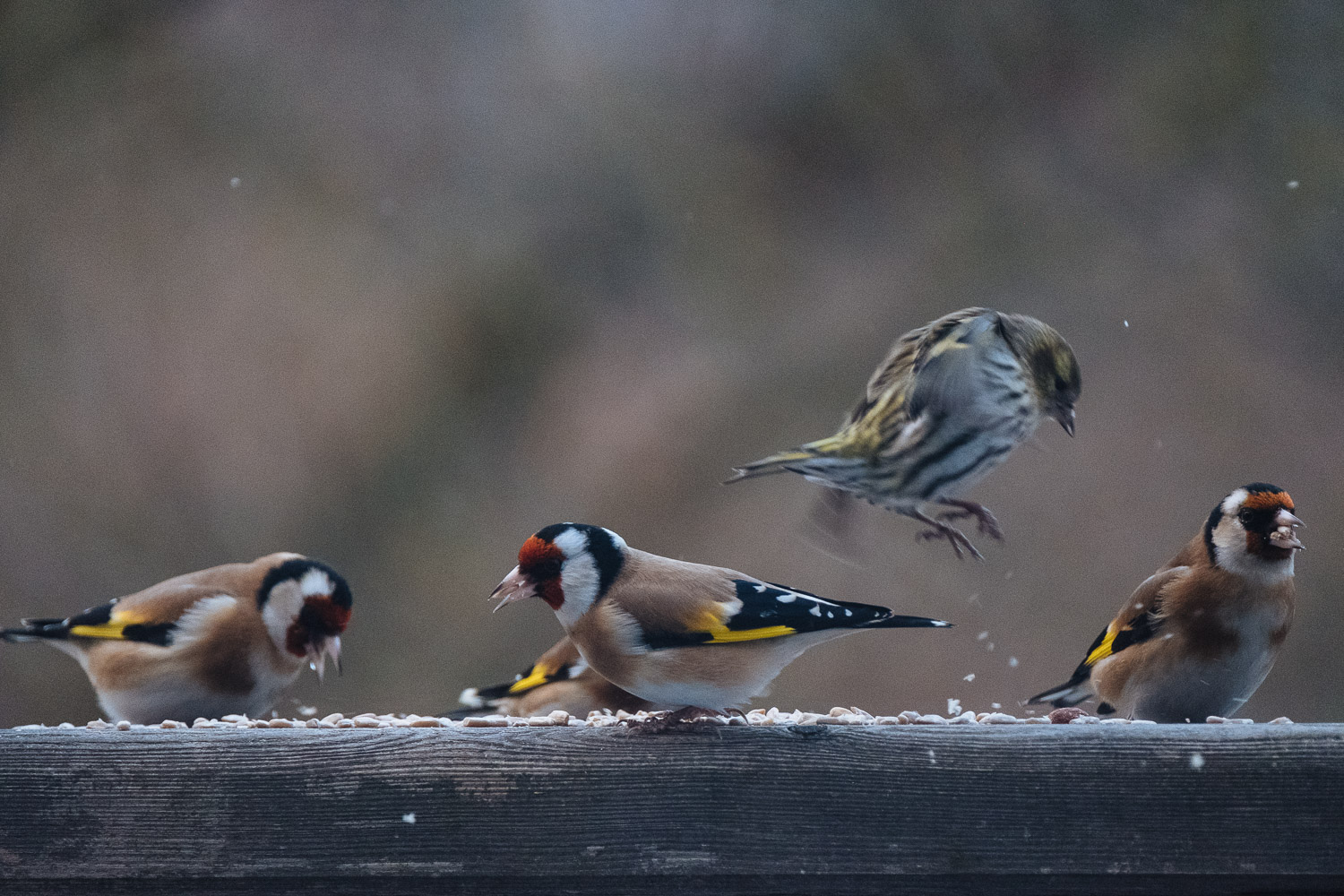 FUJIFILM X-Pro2 (334.9mm, f/5.4, 1/500 sec, ISO3200)
FUJIFILM X-Pro2 (334.9mm, f/5.4, 1/500 sec, ISO3200)
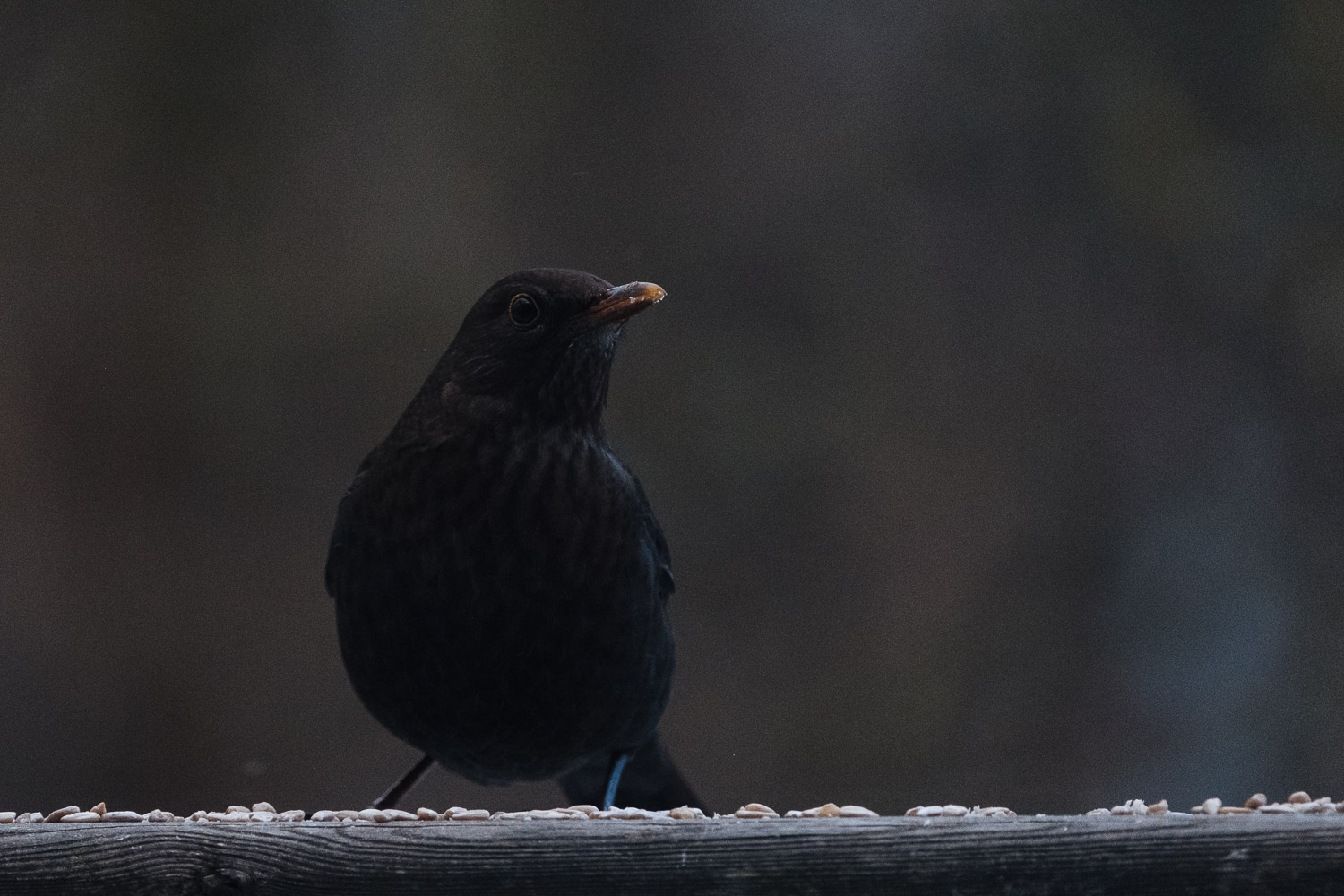 FUJIFILM X-Pro2 (347mm, f/5.6, 1/640 sec, ISO3200)
FUJIFILM X-Pro2 (347mm, f/5.6, 1/640 sec, ISO3200)
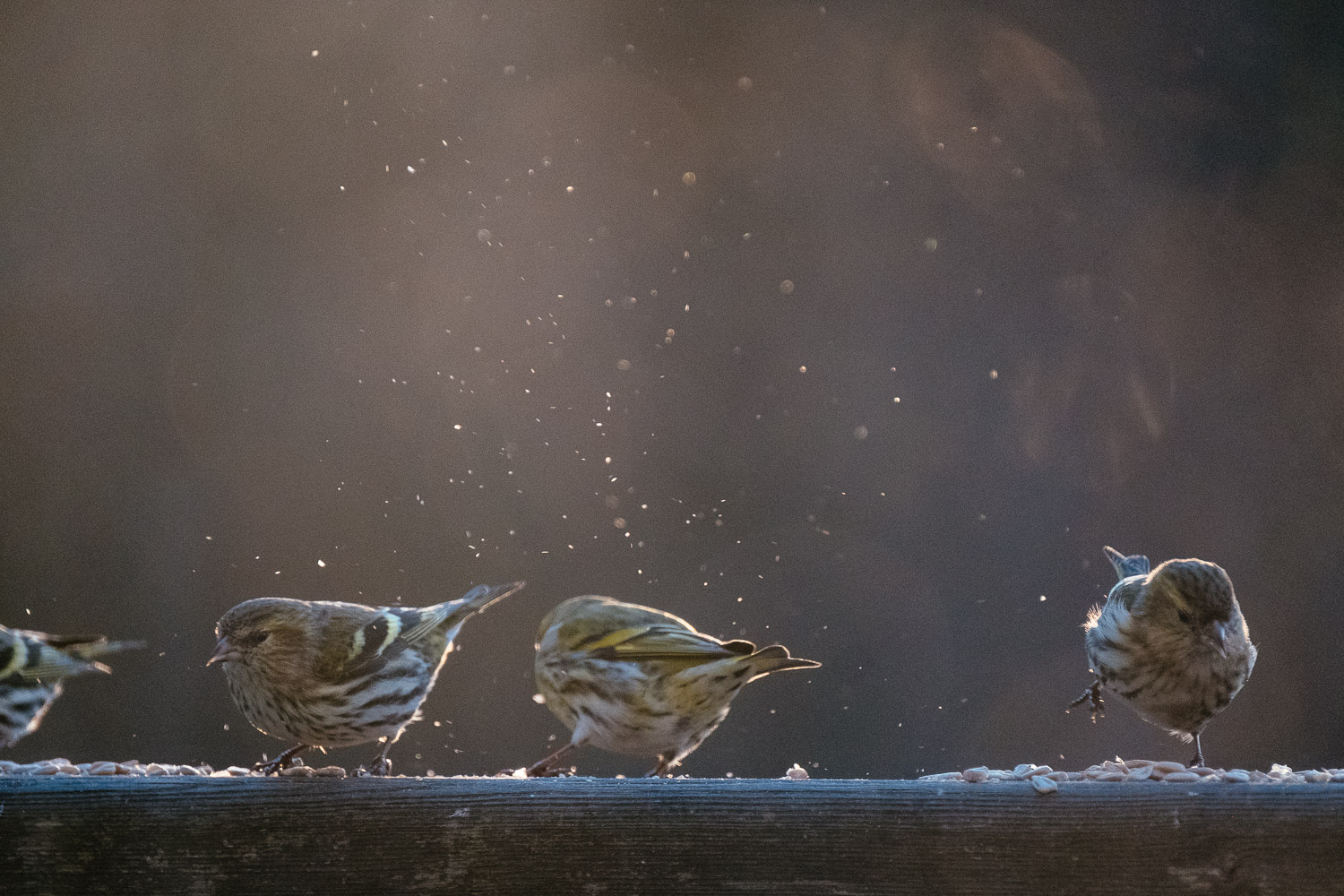 FUJIFILM X-Pro2 (400mm, f/5.6, 1/1000 sec, ISO3200)
FUJIFILM X-Pro2 (400mm, f/5.6, 1/1000 sec, ISO3200)
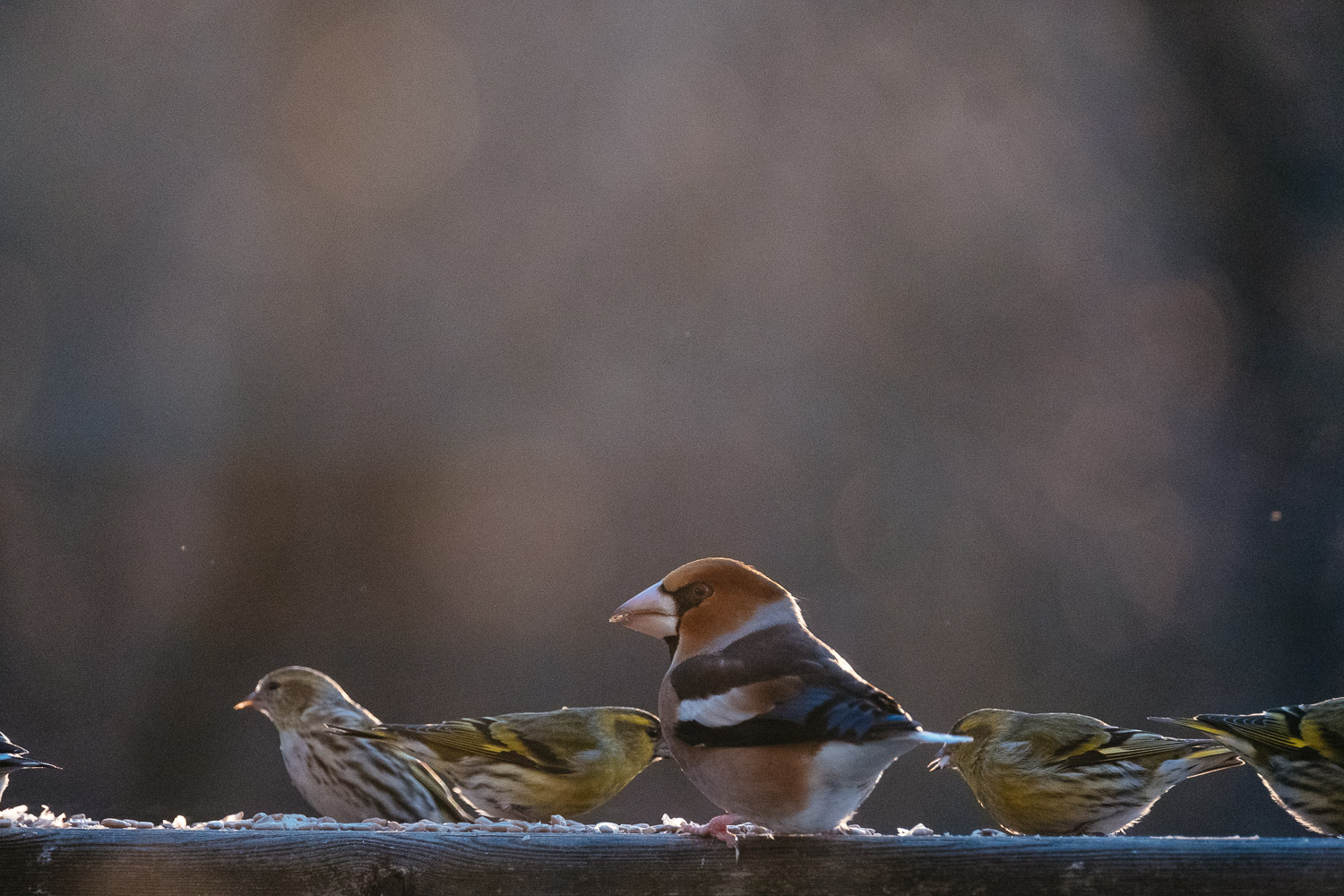 FUJIFILM X-Pro2 (323.2mm, f/5.6, 1/1000 sec, ISO3200)
FUJIFILM X-Pro2 (323.2mm, f/5.6, 1/1000 sec, ISO3200)
 FUJIFILM X-Pro2 (323.2mm, f/5.6, 1/1000 sec, ISO3200)
FUJIFILM X-Pro2 (323.2mm, f/5.6, 1/1000 sec, ISO3200)
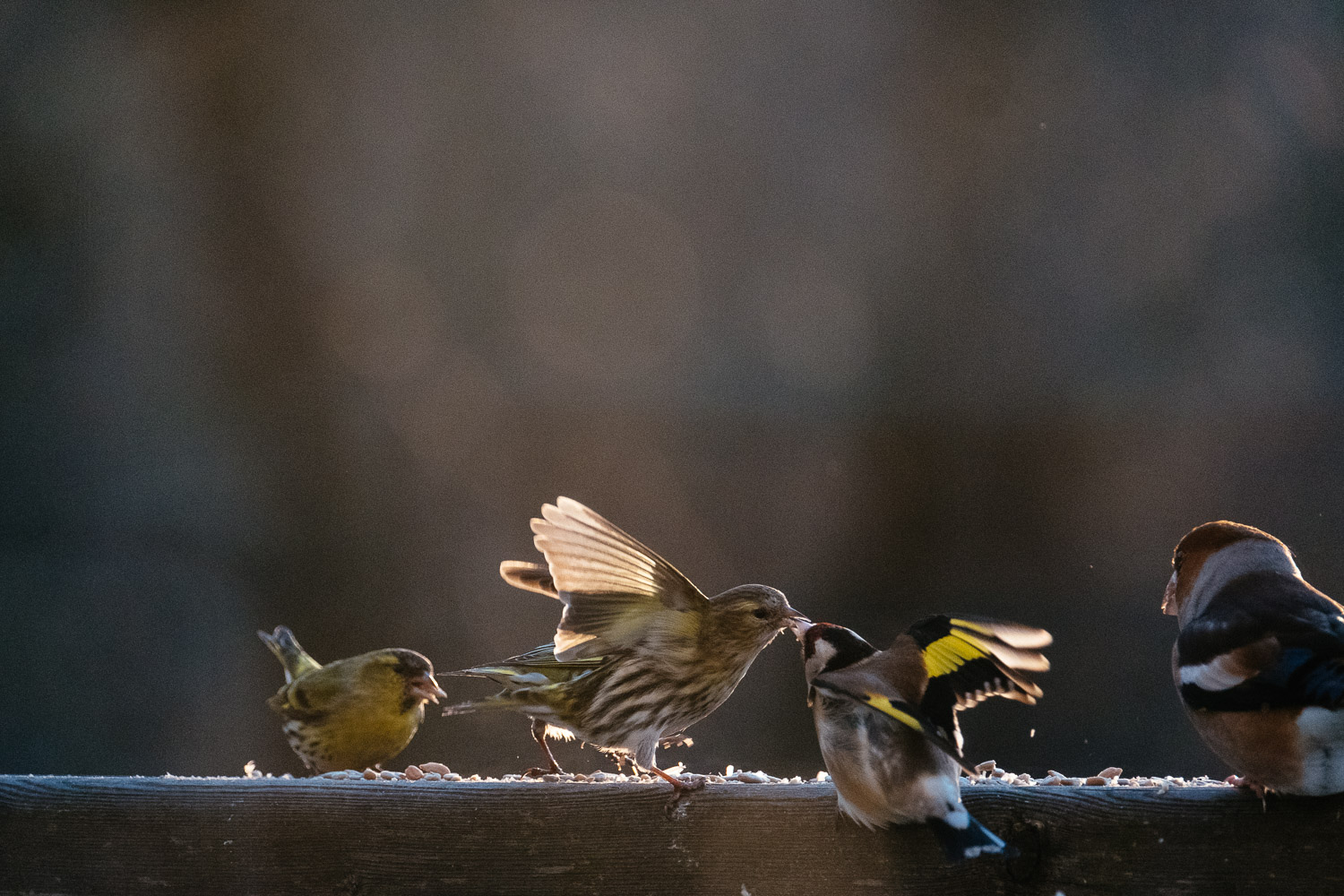 FUJIFILM X-Pro2 (323.2mm, f/5.6, 1/1000 sec, ISO3200)
FUJIFILM X-Pro2 (323.2mm, f/5.6, 1/1000 sec, ISO3200)
But there is one area where you still want to have a fast tele lens: Subject isolation. A fast tele lens can give you much better separation from the background. Especially on a full frame sensor. A rather slow tele zoom like the XF 100-400 OIS is always a compromise when it comes to blur away busy backgrounds.
With a tele zoom you always have to watch the background. If there is sunlit branch or a bold color subject behind your subject it will destroy your image. Ideally the distance to your subject is short and the distance in between your subject and the background is long. Like in my pictures. The birds were near the minimum focus distance of the 100-400 and the trees in the background were two to three times farther away.
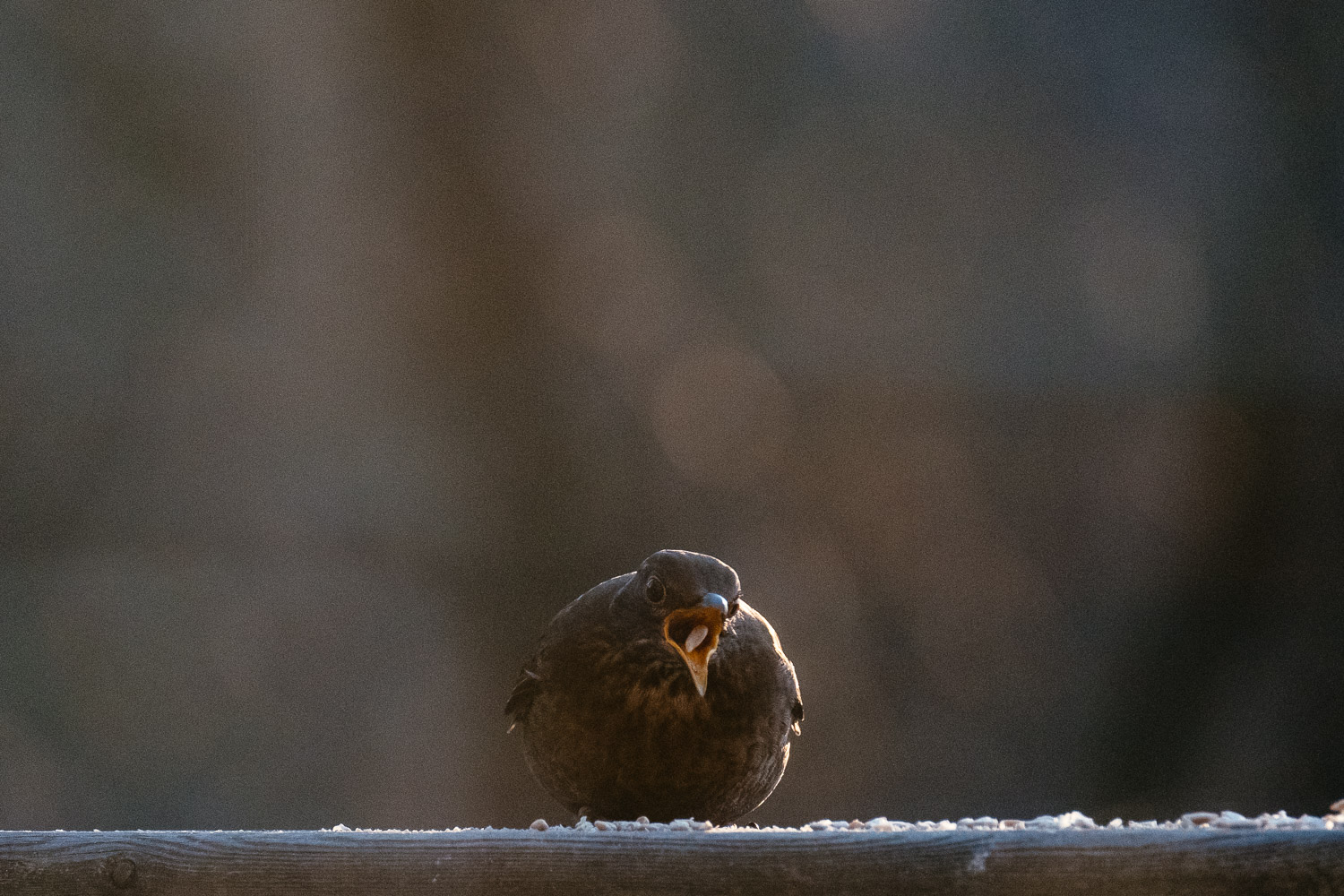 FUJIFILM X-Pro2 (323.2mm, f/5.6, 1/1000 sec, ISO3200)
FUJIFILM X-Pro2 (323.2mm, f/5.6, 1/1000 sec, ISO3200)
 FUJIFILM X-Pro2 (323.2mm, f/5.6, 1/1000 sec, ISO3200)
FUJIFILM X-Pro2 (323.2mm, f/5.6, 1/1000 sec, ISO3200)
 FUJIFILM X-Pro2 (243.3mm, f/5, 1/250 sec, ISO1250)
FUJIFILM X-Pro2 (243.3mm, f/5, 1/250 sec, ISO1250)
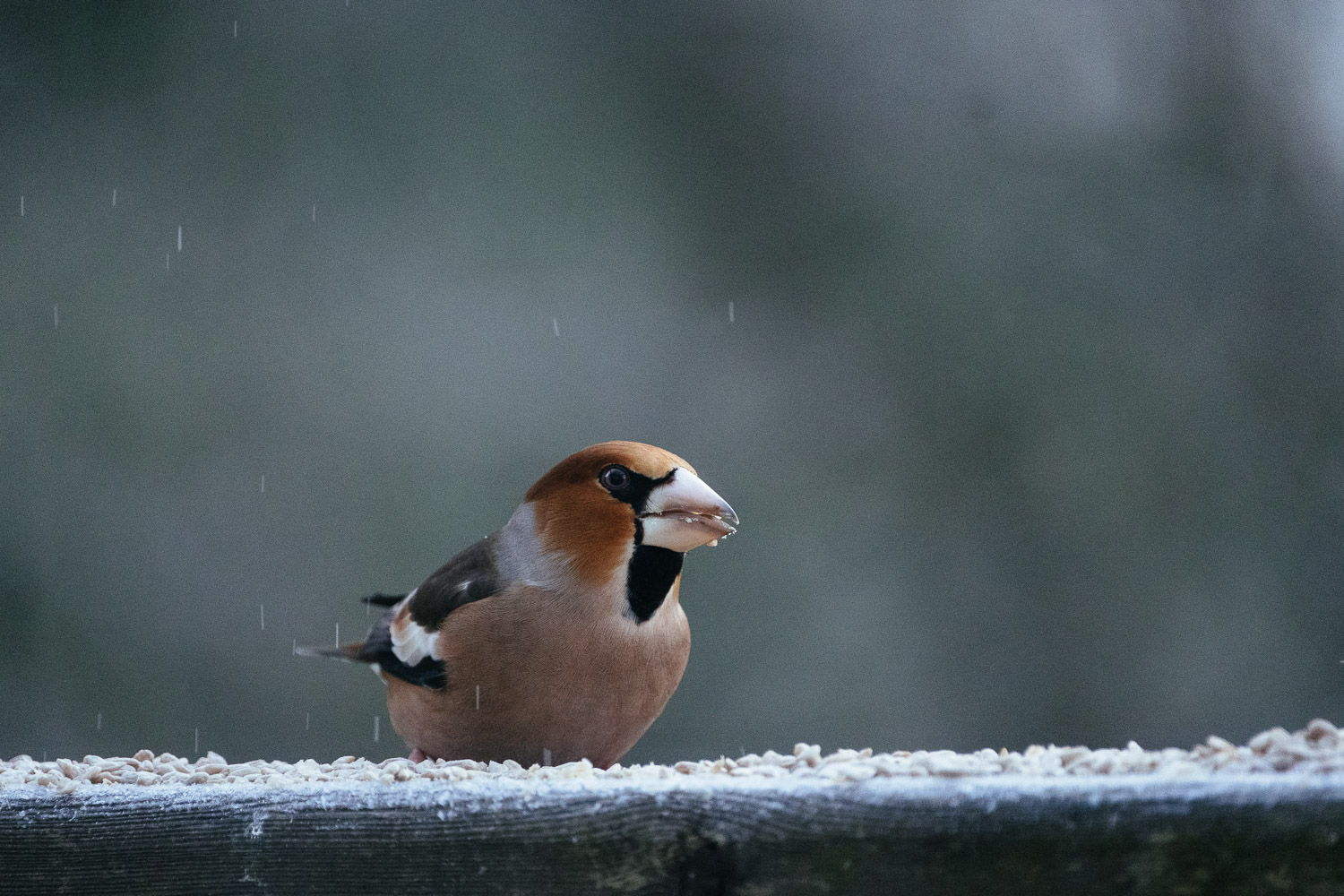 FUJIFILM X-Pro2 (400mm, f/5.6, 1/250 sec, ISO3200)
FUJIFILM X-Pro2 (400mm, f/5.6, 1/250 sec, ISO3200)
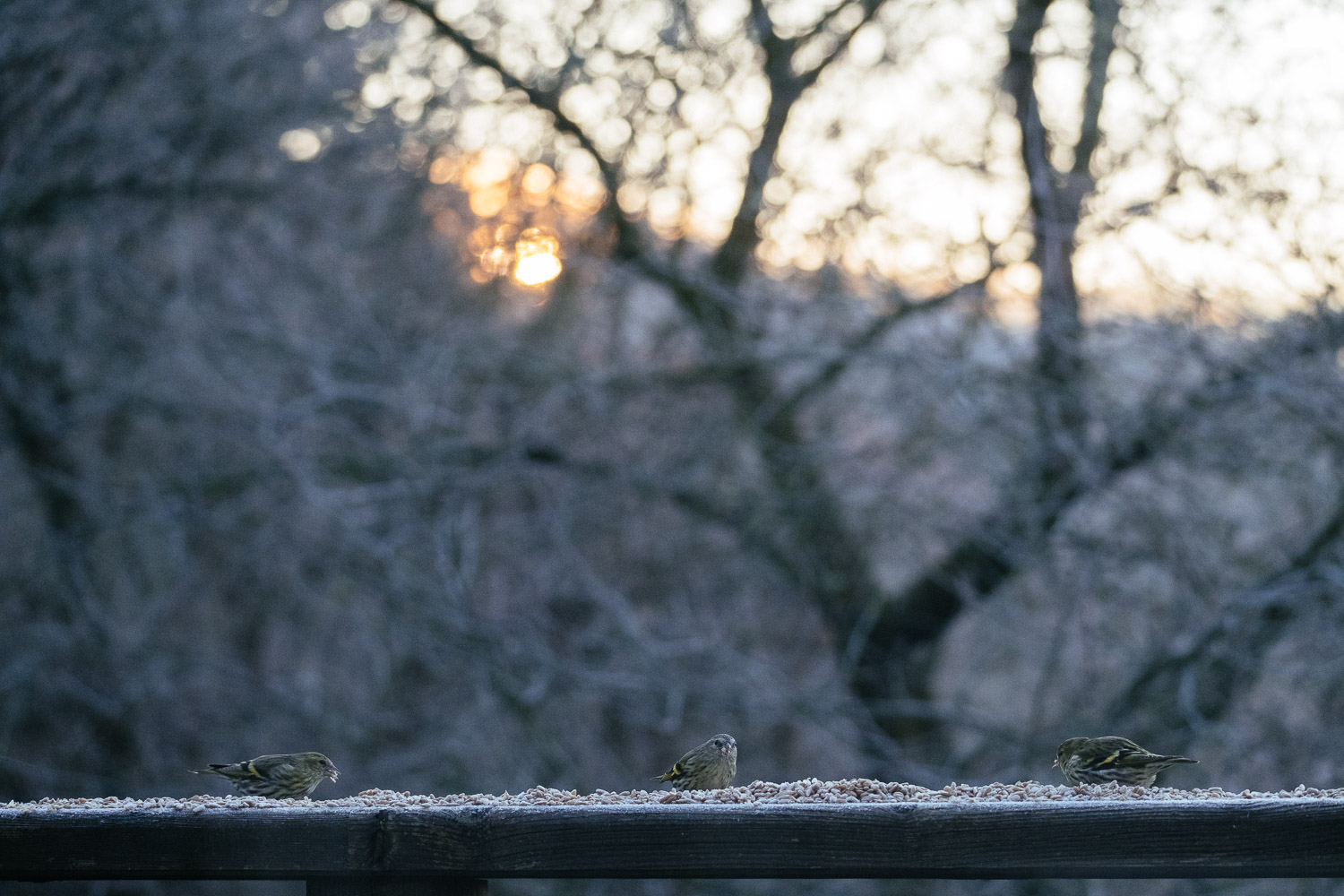 FUJIFILM X-Pro2 (100mm, f/4.5, 1/500 sec, ISO1600)
FUJIFILM X-Pro2 (100mm, f/4.5, 1/500 sec, ISO1600)
The picture above shot with the zoom set at 100mm shows the whole scene. The railing of my porch that acts as a feeding table, the trees the background and the rising sun in the back. Even at 100mm the busy background doesn’t look too bad. It seems that Fuji always takes care about the Bokeh, the way that the out of focus areas are rendered. Beside the sharpness that was the biggest surprise. Initially I hesitated to get this lens because I never liked the Nikon 80-400 VR (first version). Not sharp, slow AF and poor Bokeh. When I sold the Nikon I thought I would never buy a 80-400 zoom ever again. Well, never say never again! But the reason is simple: The Fuji is sharp, AF is fast and Bokeh looks surprisingly nice for such a lens.
So what’s not to like? The lens is rather big and heavy. This is for sure not a walk around lens but it is still among the smallest and lightest of its kind. It makes a fantastic landscape lens because it offers a lot of compression but of course it also is a perfect lens for wildlife- and bird photography especially when traveling. Nobody, except professional wildlife photographers, travel with a 500/4 or 600/4 or even a 300/2.8. For traveling a 300/4 is a better option or to combine a 70-200/2.8 plus converters but the most convenient solution is a 100-400 zoom. Sometimes it is still hard to decide.
If you shoot Fuji it is simple: The 100-400 is the only option. And you can even add converters. I only got the 1.4 TC because I don’t think there ever will be enough light to shoot with a lens that is f11 wide open. But the 1.4 TC will give me far more reach than I ever had before. I really look forward to my next trip to Canada or the USA. This will be a very powerful lens.
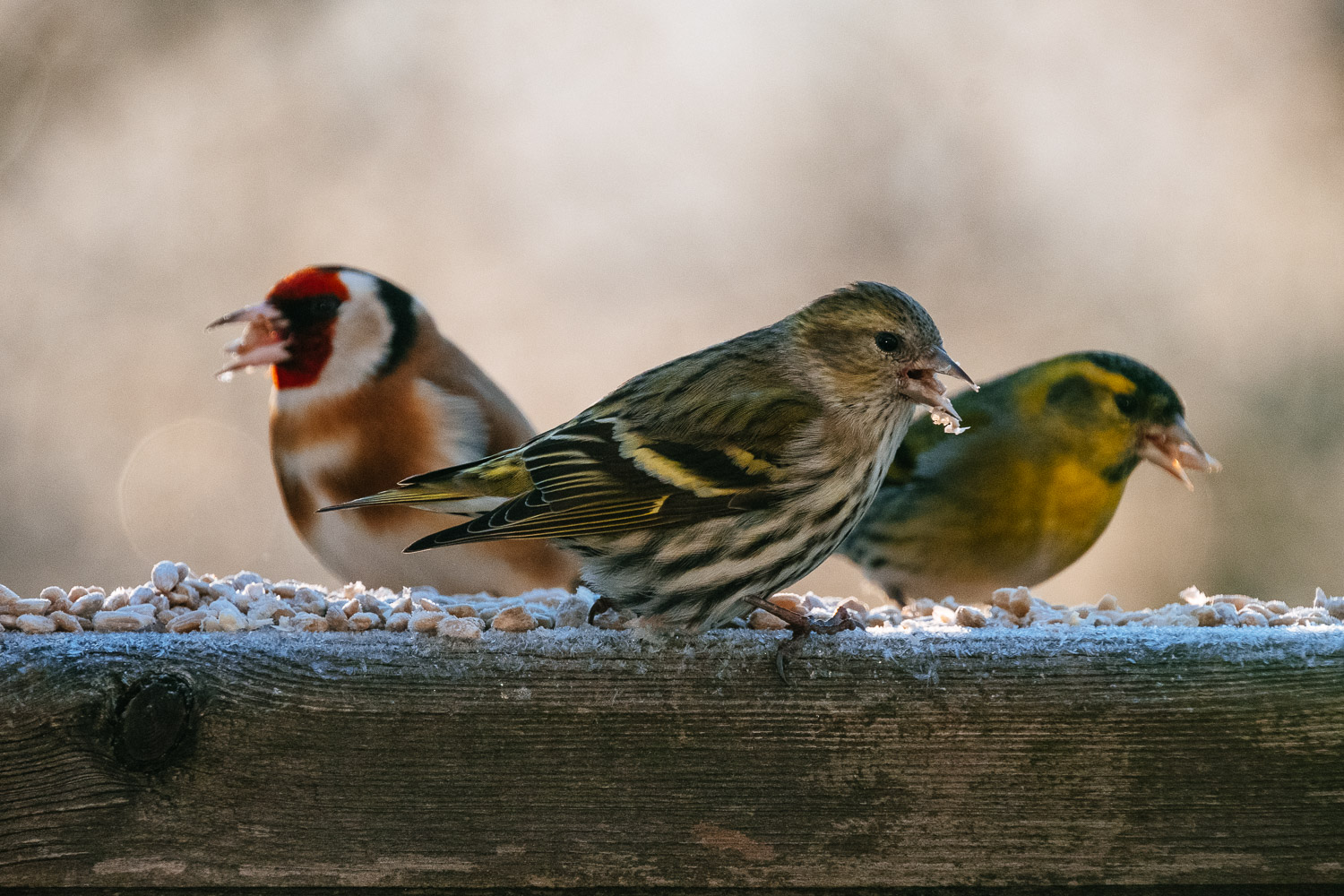 FUJIFILM X-Pro2 (400mm, f/8, 1/500 sec, ISO2500)
FUJIFILM X-Pro2 (400mm, f/8, 1/500 sec, ISO2500)
 FUJIFILM X-Pro2 (261.2mm, f/8, 1/500 sec, ISO1250)
FUJIFILM X-Pro2 (261.2mm, f/8, 1/500 sec, ISO1250)
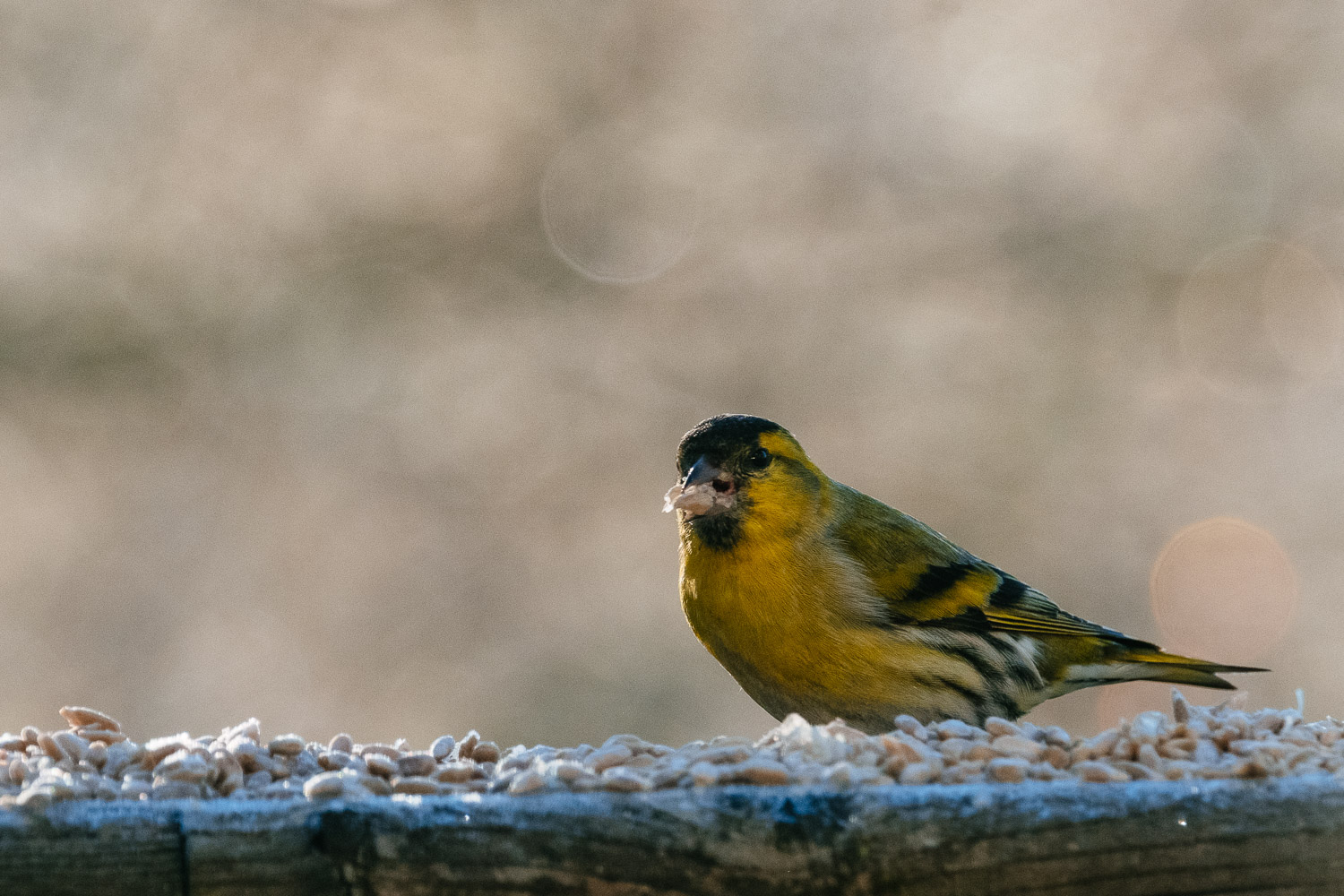 FUJIFILM X-Pro2 (334.9mm, f/8, 1/500 sec, ISO1600)
FUJIFILM X-Pro2 (334.9mm, f/8, 1/500 sec, ISO1600)
Back to the birds in my garden. This January was the coldest since a very long time. Last time the average temperature was lower my below 30 colleagues were not yet born. So we bought a lot of bird seeds. On some days we refilled the feeders two to three times. But we got a lot back. It’s just great to watch the birds.
PS: I should comment on the very high ISO values. In order to get so close to the birds I had to shoot through the window. The problem is that I live in a low-energy house and that means that my windows have three panes. Those three layers of glass cost a lot of light – I guess around 3 to 4 stops. That’s why ISO values are so high.
On the other hand I was wearing nothing but my pyjamas.

